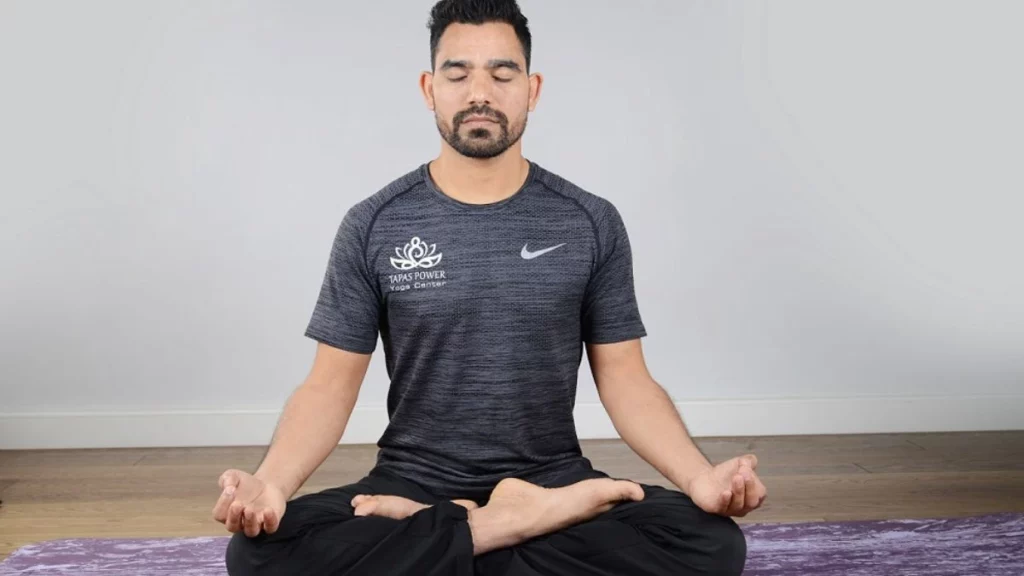Introduction
Padmasana, also known as the Lotus Pose, is an iconic yoga posture that symbolizes purity, serenity, and spiritual awakening. With its origins deeply rooted in ancient yogic texts and revered by practitioners worldwide, Padmasana holds a special place in the realm of meditation and inner exploration. In this article, we delve into the history, significance, benefits, step-by-step guide, and precautions associated with the sacred and graceful Padmasana.
Tracing the Origins of Padmasana
Padmasana’s history dates back to ancient India, where it was practiced as a traditional yoga pose. With references in ancient texts like the Hatha Yoga Pradipika and the Bhagavad Gita, Padmasana has been an integral part of yogic practices for centuries. Its association with the lotus flower, a symbol of purity and spiritual awakening, adds to its profound significance.
Embracing the Symbolism of the Lotus Pose
The symbolism of Padmasana lies in its resemblance to a blossoming lotus flower. Just as a lotus rises from murky waters to bloom beautifully, this pose encourages practitioners to rise above the distractions and impurities of the material world to find inner peace and enlightenment. The lotus also represents the awakening of the Kundalini energy, believed to lie dormant at the base of the spine.
A Step-by-Step Guide to Practicing Padmasana

To perform Padmasana with comfort and ease, follow these step-by-step instructions:
- Sit on the floor with your legs extended in front of you, keeping your spine straight.
- Bend your right knee and bring your right foot onto your left thigh, close to your pelvis. The sole of your right foot should face the ceiling.
- Now, bend your left knee and place your left foot onto your right thigh, close to your pelvis, with the sole facing upward.
- Ensure that both knees touch the ground and your spine remains erect.
- Place your hands on your knees, palms facing upward, in a mudra of your choice, like Chin Mudra or Jnana Mudra.
- Relax your whole body and focus on your breath.
- Hold the pose for a comfortable duration, gradually increasing the time with practice.
The Profound Benefits of Padmasana
Practicing Padmasana regularly can bestow numerous physical, mental, and spiritual benefits:
- a) Enhanced Flexibility: Padmasana helps open up the hips, knees, and ankles, leading to increased flexibility in these areas.
- b) Improved Posture: By promoting an upright spine, this pose contributes to better posture and alignment.
- c) Calm and Focused Mind: The meditative nature of Padmasana brings peace to the mind, reduces stress, and enhances concentration.
- d) Stimulated Energy Flow: Padmasana facilitates the flow of prana (life force energy) throughout the body, promoting overall vitality.
- e) Spiritual Awakening: The pose is believed to awaken the higher chakras and elevate one’s consciousness, paving the path to spiritual growth.
Precautions and Contraindications
While Padmasana can be highly beneficial, certain precautions are essential:
- a) Knee or Ankle Injuries: People with knee or ankle issues should avoid Padmasana or modify the posture to prevent strain.
- b) Discomfort or Pain: If you experience any discomfort or pain while in the pose, slowly come out of it and explore alternative sitting positions.
- c) Pregnancy: Pregnant women should avoid practicing Padmasana due to the pressure it puts on the abdominal area and the risk of overstretching ligaments.
Conclusion
Padmasana, the Lotus Pose, stands as an emblem of beauty, purity, and spiritual transformation. As practitioners embrace this graceful seat, they embark on a journey of inner exploration, finding tranquility, and unveiling the potential for spiritual awakening. With mindfulness, dedication, and respect for their body’s limitations, individuals can harness the myriad benefits of Padmasana, fostering a harmonious connection between the physical, mental, and spiritual aspects of their being.


